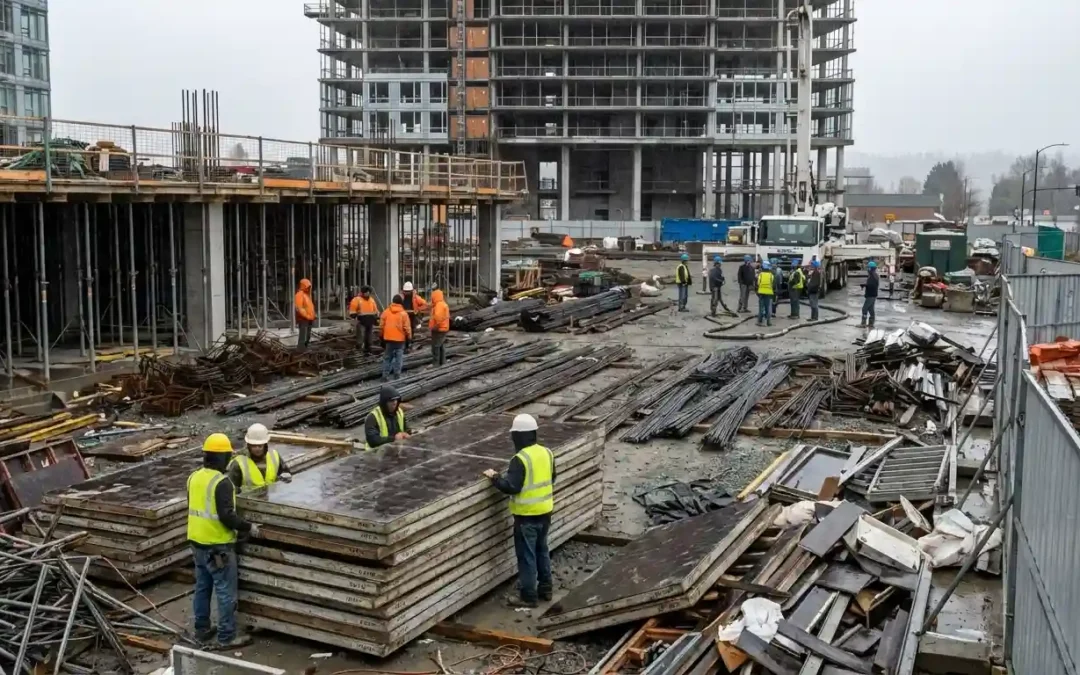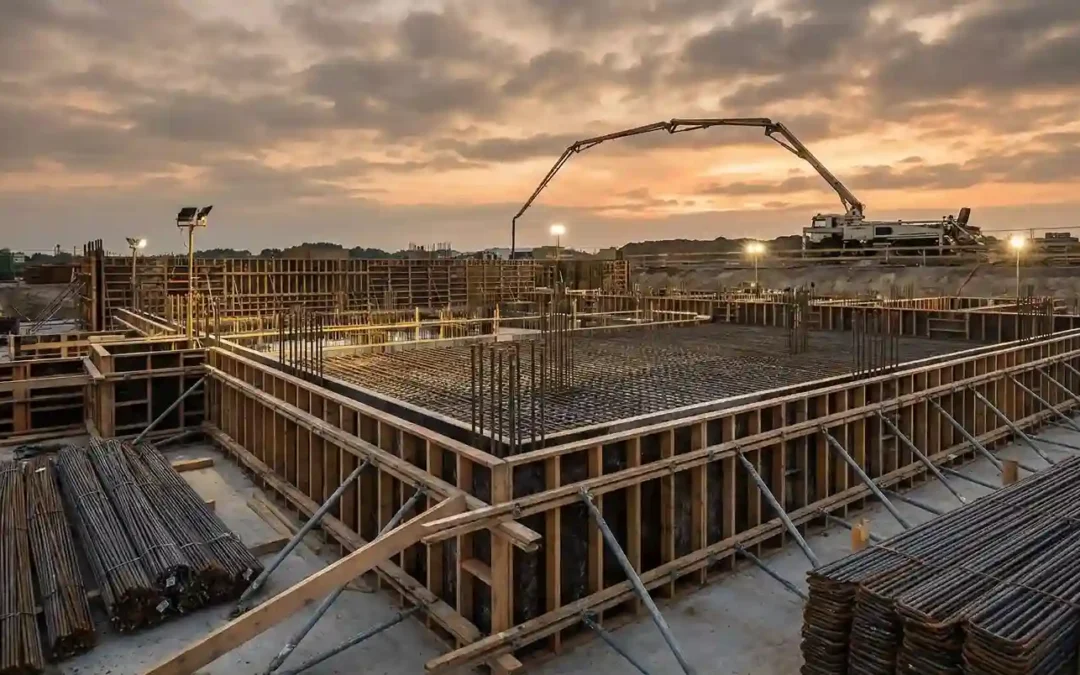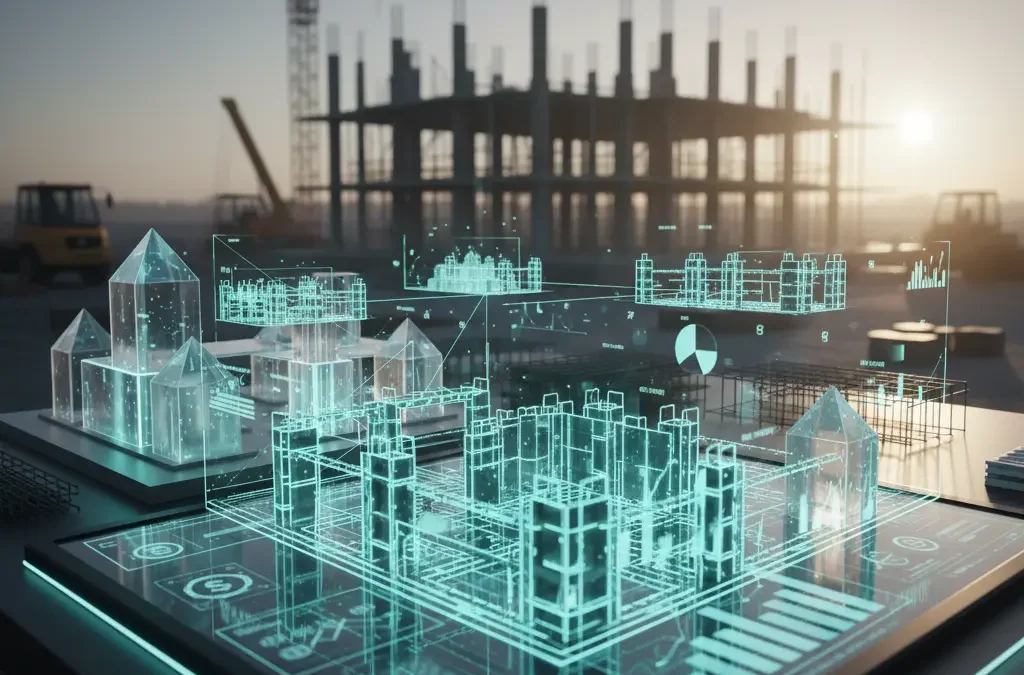
The construction sector is quickly moving towards a smarter, data-driven future—where digital insights and human skills collaborate together. Success is now in the hands of those who view the Form, reo, and pour process as intergrated elements of a one, intelligent flow rather than separate tasks.
At Future Form, we take pride in leading that change. Through the integration of cutting-edge technology and expert team, we empower our partners to achieve faster, safer, and smarter results. The future of formwork goes beyond just support for concrete; it represents the support of innovative ideas. When smart systems collaborate with skilled contractors, innovation transforms into structure, and structure grows into legacy.
Why we need smarter formwork systems
In traditional construction, the difference work between formwork, reinforcement placement, and concrete pouring often leads to misunderstandings and errors. smallest inconsistencies at the beginning of the Form, Reo, or Pour process can result in considerable rework down the process. Nilimaa and Gamil indicate that formwork may represent a significant portion, ranging from 35% to 60%, of the overall costs associated with concrete construction. When coordination fails, the consequences goes beyond just increased costs; they include lost time, safety risks, and weakened structural integrity.
Advanced formwork systems address these challenges directly by incorporating solid planning and smart automation. By using shared data and digital simulation, teams achieve full visibility throughout each stage of the construction process. Every Form, reo, and pour activity is carefully coordinated under a single master plan, preventing delays, avoiding conflicts, and improving the precision of project forecasting. This level of integration allows construction teams to prioritise quality and safety rather than constantly addressing avoidable problems on site.
What is smart FRP systems
A Smart FRP system goes beyond just digital drawings or scheduling; it embodies a comprehensive strategy for the structural package, addressing every stage of Form, reo, and pour.
Here’s what makes it “smart”:
- Digital modelling and simulation: With the help of modern 3D and 4D modelling, project teams can gain an understanding of how the formwork, reinforcement, and concrete pours will come together just before the start of construction. Challenges such as traffic jams, conflicts, or timing errors are addressed in a virtually rather than a physical one.
- Automated scheduling and coordination: Smart software solutions align deliveries, equipment, and workforce availability easily. This guarantees that the formwork is prepared for the arrival of reinforcement, allowing the pour to take place under ideal curing conditions.
- Real-Time monitoring: Sensors integrated into formwork or concrete record curing temperatures, pressure, and moisture levels. This information delivers immediate understanding of structural performance and safety conditions.
- Adaptive learning: Thanks to AI integration, systems can now adapt their order in real-time, enhancing the intelligence of each FRP cycle beyond the previous one.
According to Fommec, the integration of digital tools in formwork design is transforming the way construction teams collaborate, minimising rework while improving the precision of concrete work.
Intelligent FRP systems seamlessly connect engineering with execution—where data, design, and delivery integrate perfectly.
How smart frp systems deliver value for developers and construction professionals
Smart FRP systems are transforming what we expect from modern construction. They provide real, measurable advantages throughout the entire project lifecycle:
Predictive planning and risk mitigation
By simulating the Form, reo, and pour sequence early in the design process, potential clashes or sequencing delays can be pinpointed before arriving on site. This forward-thinking strategy reduces the need for rework, cuts down on delays, and minimizes material waste.
Enhanced structural accuracy
The precision needed during the formwork and reinforcement stages has a direct impact on both the durability and aesthetic of the concrete. Fast Form highlights that modern formwork systems provide precision down to the millimetre, guaranteeing perfect alignment and superior quality with each pour.
Reduced site delays
Integrated scheduling guarantees a smooth transition between each stage of FRP. When formwork, reinforcement, and concreting teams operate from a single central plan, delay becomes a thing of the past.
Sustainability and resource efficiency
Modular formwork that can be reused, optimised concrete volumes, and the ability to track data in real-time all play an important part in promoting sustainable operations. Minimizing waste, reducing reworks, and cutting emissions highlight FRP systems as both environmentally friendly and financially effective.
Strengthened collaboration
Smart FRP systems support enhanced connections among developers, FRP contractors, and suppliers. When everyone involved interact within an integrated digital framework, coordination shifts from being reactive to becoming proactive.
Being smart goes beyond just being digital; it involves smooth integration.
Practical steps for clients to adopt smart FRP systems
The transition towards smart FRP does not require a complete transformation—it starts with straightforward, strategic actions:
- Engage Early: Work with your FRP contractor and formwork experts during the design stage. Getting input early makes sure that each decision regarding Form, reo, and pour matches your project objectives.
- Invest in Modelling: Leverage BIM and 4D modelling tools to visualize and simulate construction stages before site mobilization.
- Standardise Communication: Align your teams through a shared digital platform for scheduling, RFIs, and progress tracking.
- Adopt Modular Systems: Choose reusable formwork systems that allow for quick repositioning to reduce both labour and waste.
- Integrate Monitoring: Install IoT sensors to monitor curing times, formwork pressure, and temperature.
- Train Your Teams: Smart systems are only as effective as the people who use them. Develop digital understanding among all site teams.
- Collaborate Across the Supply Chain: Work with reinforcement suppliers, concrete providers, and engineers into your FRP planning sessions to avoid any possible delays.
By following to these steps, both developers and clients can improve their control of concreting processes, reduce risks, and maximise ROI by achieving more predictable project outcomes.
Why this matters for your future projects
Smart FRP systems are changing the method used to project design, construction, and execution. The benefits for developers and property owners are clear. Improved coordination reduces construction timelines and speeds up handovers, while improved accuracy at every form, reo, and pour stage guarantees higher quality with fewer surface flaws and increased structural strength. Predictive planning minimises costly errors, allowing teams to cut down on both labour and material costs. At the same time, the implementation of reusable systems and the optimisation of material usage improve sustainability by reducing waste and emissions—an increasingly important goal within the construction sector.
In addition to delivering quick outcomes, smart FRP technologies also set the stage for your projects’ future success. Every new project presents a chance to enhance, discover, and elevate, with insights grounded in data paving the way for increased efficiency as time goes on. For forward-thinking developers and builders, adopting these systems goes beyond just adaptation; it’s about securing a true edge in a dynamic industry where accuracy, efficiency, and sustainability are the keys of achievement.
The role of Future Form in delivering smart FRP solutions
Transforming innovative concepts into reality goes beyond just having great ideas; it requires a partner capable of simplifying complexity with expertise, accuracy, and teamwork. At Future Form, innovation begins with integration. Every structure we help bring to life is supported by a single, integrated system that ties together the form, reo, and pour process from start to finish. Instead of seeing these as separate steps, we view them as one smart system—an integrated FRP solution where design, planning, and delivery work perfectly together. By combining advanced digital modelling, precision scheduling, and deep technical expertise, we provide clients with a streamlined experience that eliminates uncertainty and maximises efficiency across their entire structural package.
Our team works closely with developers, construction professionals, and suppliers to ensure that every element of a project—from reinforcement detailing to concrete pouring—flows without friction. Through our smart scheduling and modelling capabilities, we identify potential challenges early and adjust before they impact progress, saving clients valuable time and resources. This forward-thinking method helps us provide effective formwork systems that match engineering goals and can adapt to complicated site situations. What truly sets Future Form apart is the balance we maintain between technology and craftsmanship. We use digital tools to plan and track performance, but we also rely on the hands-on knowledge of a reliable FRP contractor who knows all the details about formwork, concreting, and structural accuracy. The result is a partnership where clients feel informed, supported, and confident—knowing their vision is executed with the highest level of care and accountability. For Future Form, every form, reo, and pour is part of a broader commitment to smarter systems, safer sites, and stronger structures. We don’t just provide solutions; we deliver assurance—integrating innovation with reliability so that every project stands as a testament to forward-thinking construction.
Case snapshot: seeing smart FRP in action
Picture a recent developed mixed-use tower that faced challenges with scheduling delays, all caused from a traditional and unorganized workflow. Every stage—setting up the formwork, fixing the steel, and pouring the concrete—was managed by different teams according to their own timelines. Days were wasted waiting for materials, reinforcement was misplaced, and inspections were delayed due to a lack of integration. The journey faced interruptions, collaboration weakened, and the timeline started to fall apart.
The moment the developer moved to a smart FRP system, the difference was noticeable. The entire form, reo, and pour process was simulated using digital models, allowing the team to test layouts, spot clashes, and refine every sequence in a virtual setting just before arriving on site. Real-time data on curing conditions was delivered by built-in sensors, and integrated scheduling ensured that every stage was perfectly aligned and prepared in advance. The project achieved a remarkable 25% reduction in rework, increased structural accuracy, and shortened delivery time by two weeks. Most importantly, the client experienced an improvement in confidence regarding consistency, quality, and predictability, which shows the worth of integrated FRP solutions that prioritise thoughtful planning before construction.
The future has arrived — smart building meets smart structural systems
The construction industry is growing, embracing a future that is increasingly smart and driven by data. Success is reserved for those who see the form, reo, and pour process as a one, intelligent process rather than just three separate steps.
At Future Form, we’re leading that transformation. By merging technology, craftsmanship, and collaboration, we enable our partners to build with clarity, confidence, and control.
The next generation of formwork isn’t just about supporting concrete—it’s about supporting vision. When smart systems meet smart people, innovation becomes structure.
References
Fommec Global Private Limited. (2024, May 22). How digital tools are transforming aluminium formwork design in Malaysia. Retrieved from https://www.fommec.com/how-digital-tools-are-transforming-aluminium-formwork-design-in-malaysia/
Fast Form. (n.d.). Innovations in formwork systems for modern construction. Retrieved from https://fastform.net.au/innovations-in-formwork-systems/
Nilimaa, J., & Gamil, Y. (2023). Formwork engineering for sustainable concrete construction. CivilEng, 4, 1098–1120. Retrieved from https://www.researchgate.net/publication/374804918_Formwork_Engineering_for_Sustainable_Concrete_Construction





